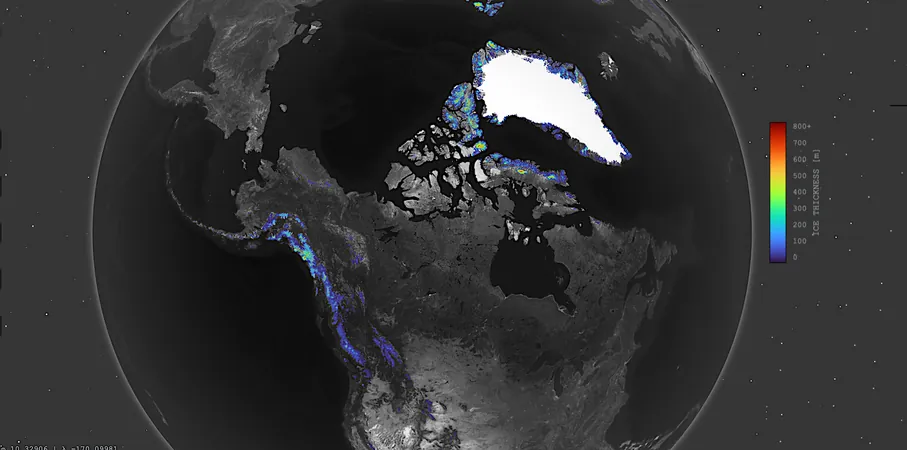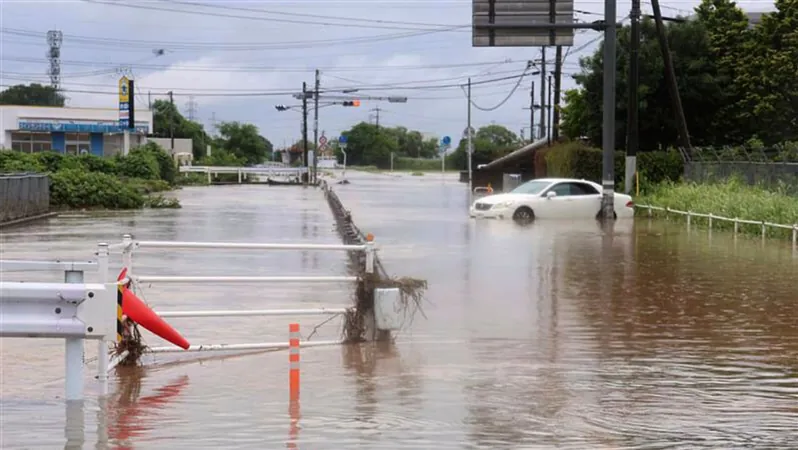
Revolutionizing Climate Science: AI Model Unveils Earth’s Glacier Volumes!
2025-05-16
Author: Siti
Groundbreaking AI Technology Takes On Glacier Measurement
In a thrilling development for climate science, a visionary team led by Niccolò Maffezzoli from Ca' Foscari University of Venice and UC Irvine has unveiled the world’s first artificial intelligence model to accurately gauge the volume and ice thickness of every glacier on Earth. Published in the prestigious journal Geoscientific Model Development, this innovative tool is destined to reshape our understanding of glacier dynamics and their role in future climate scenarios.
Why Understanding Glacier Volumes Matters
Knowing the volume of glaciers is crucial for anticipating future sea level rise, managing essential water resources, and addressing the societal challenges associated with glacial melt. Despite over four million direct measurements collected through initiatives like NASA’s Operation IceBridge, estimating the total volume of glaciers remains a complex scientific enigma.
Harnessing Machine Learning for Global Ice Data
Current glacier thickness data covers a mere fraction—less than 1%—of the world's glaciers, emphasizing the urgent need for advanced models. This cutting-edge study marks a landmark moment as it combines extensive observational data with sophisticated machine learning algorithms. Maffezzoli states, "Our model incorporates two decision tree algorithms trained on thickness data alongside 39 variables, such as ice velocity and temperature. The resulting accuracy is groundbreaking, with errors reduced by 30-40% compared to traditional models.
Impact on Future Sea Level Rise Projections
In regions like Greenland and Antarctica, precise ice thickness estimates are vital for modeling ice flow and its ocean interactions, which are essential for predicting sea level changes in a warming world. The model’s robust performance in these critical areas could enhance understanding of subglacial topography—a key factor in ice sheet stability.
A Promising Future for Glacier Research
This pioneering research is just the beginning. Maffezzoli revealed plans to release a staggering half a million ice thickness maps by the end of 2025. He emphasizes, "While there is still much work to do, this study highlights the transformative power of AI and machine learning in global ice research.”
The Urgency of Melting Glaciers
Currently, glaciers are responsible for approximately 25-30% of global sea level rise, with their melting accelerating alarmingly. This phenomenon is particularly critical in arid regions, such as the Andes and the Himalayas, where glacial meltwaters are lifelines for billions of people. Understanding the dynamics of polar ice sheets is equally essential, as their interactions with the ocean heavily influence their stability.


 Brasil (PT)
Brasil (PT)
 Canada (EN)
Canada (EN)
 Chile (ES)
Chile (ES)
 Česko (CS)
Česko (CS)
 대한민국 (KO)
대한민국 (KO)
 España (ES)
España (ES)
 France (FR)
France (FR)
 Hong Kong (EN)
Hong Kong (EN)
 Italia (IT)
Italia (IT)
 日本 (JA)
日本 (JA)
 Magyarország (HU)
Magyarország (HU)
 Norge (NO)
Norge (NO)
 Polska (PL)
Polska (PL)
 Schweiz (DE)
Schweiz (DE)
 Singapore (EN)
Singapore (EN)
 Sverige (SV)
Sverige (SV)
 Suomi (FI)
Suomi (FI)
 Türkiye (TR)
Türkiye (TR)
 الإمارات العربية المتحدة (AR)
الإمارات العربية المتحدة (AR)